
The near year is upon us and sometimes that means getting back into the swing of things takes a little more time. Even in the kitchen it’s nice to start with simple dishes following an excess of holiday meals and over the top dishes you reserve for one last bang to end the year on.
When thinking about the first dish of the year to share with you, I couldn’t help but continuously glance over at the egg basket sitting near the kitchen window. It was full to the brim. And the excess eggs, somewhere around 48 eggs were taking up far too much space in the corner. You see our hens had stopped producing eggs when the weather turned toward the middle of autumn. The egg basket was empty. Mid-December, we peaked in the coop to discover a good handful of fresh eggs. We haven’t been able to use them up as fast as they have been coming, so a simple egg dish seemed not only appropriate but somewhat imperative.
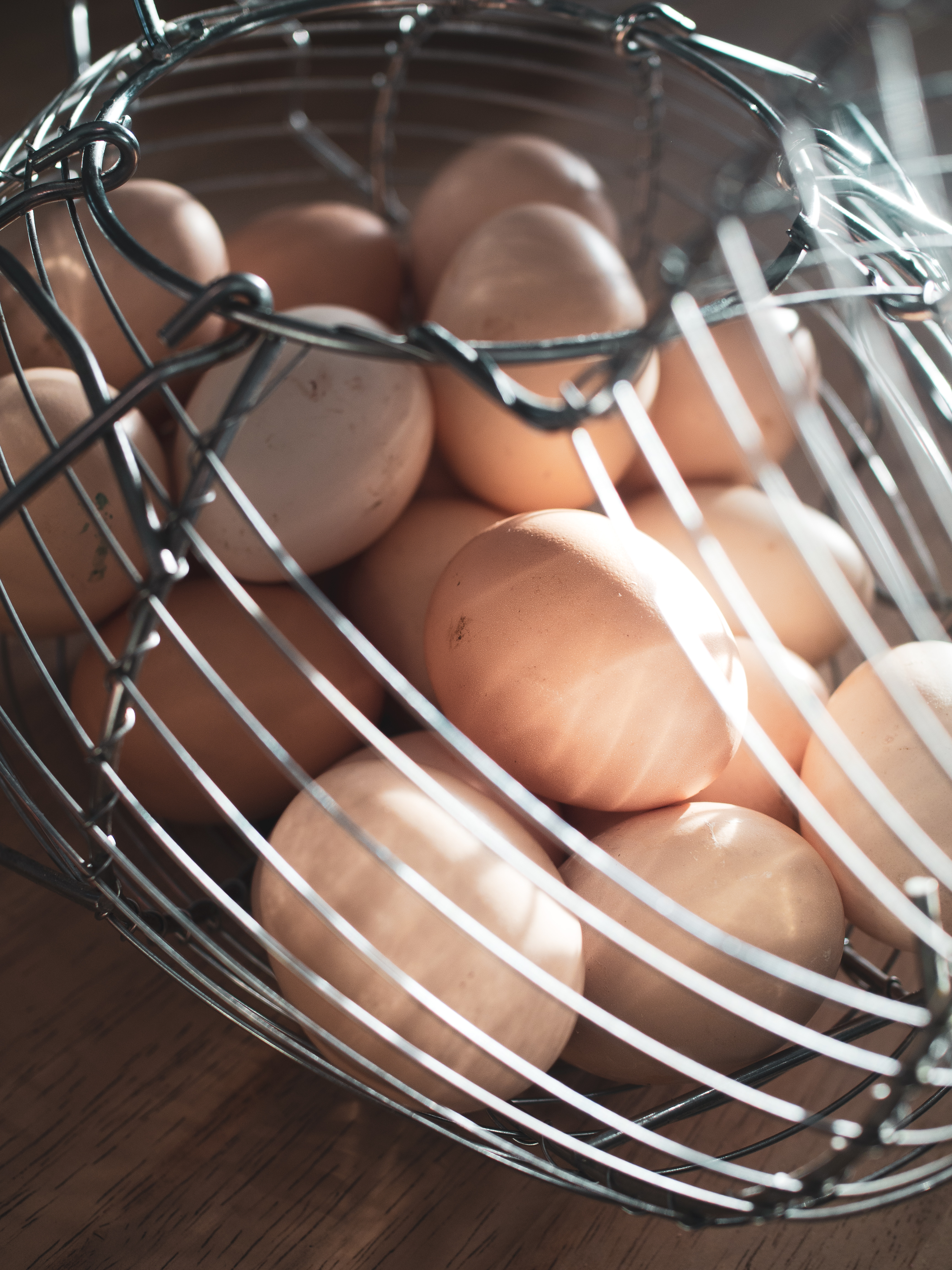
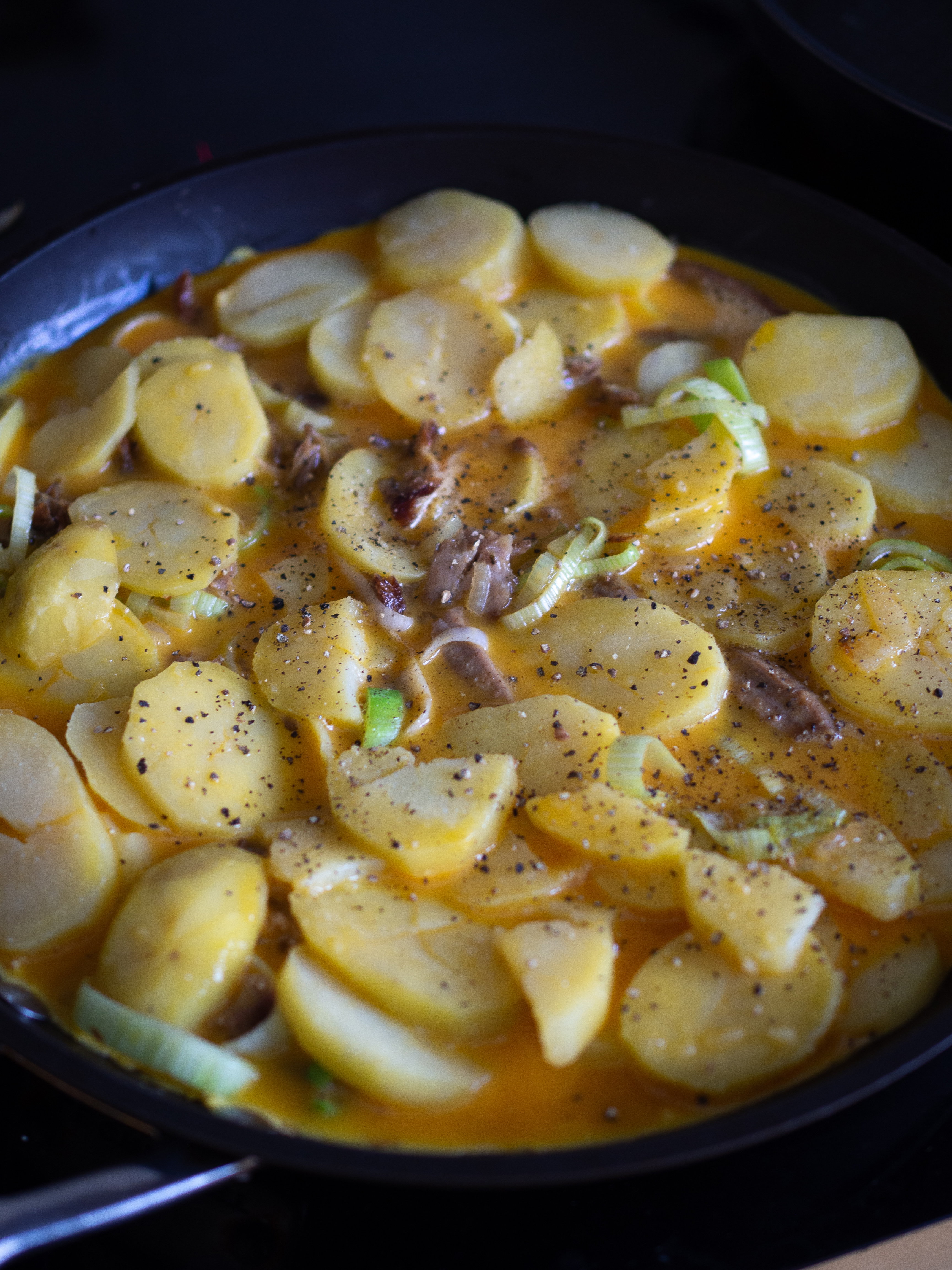
As I was reading through some old Norwegian cookbooks, I came across Bondeomelette, which translates to “farm omelette”. This is the Norwegian equivalent to the French omelette or the Spanish tortilla. Eggs, potatoes, meat, and a veggie or herb for good measure. I’m not sure when the omelette took hold on the Norwegian farm, but cookbooks dated back to the late 1800s include recipes for it.
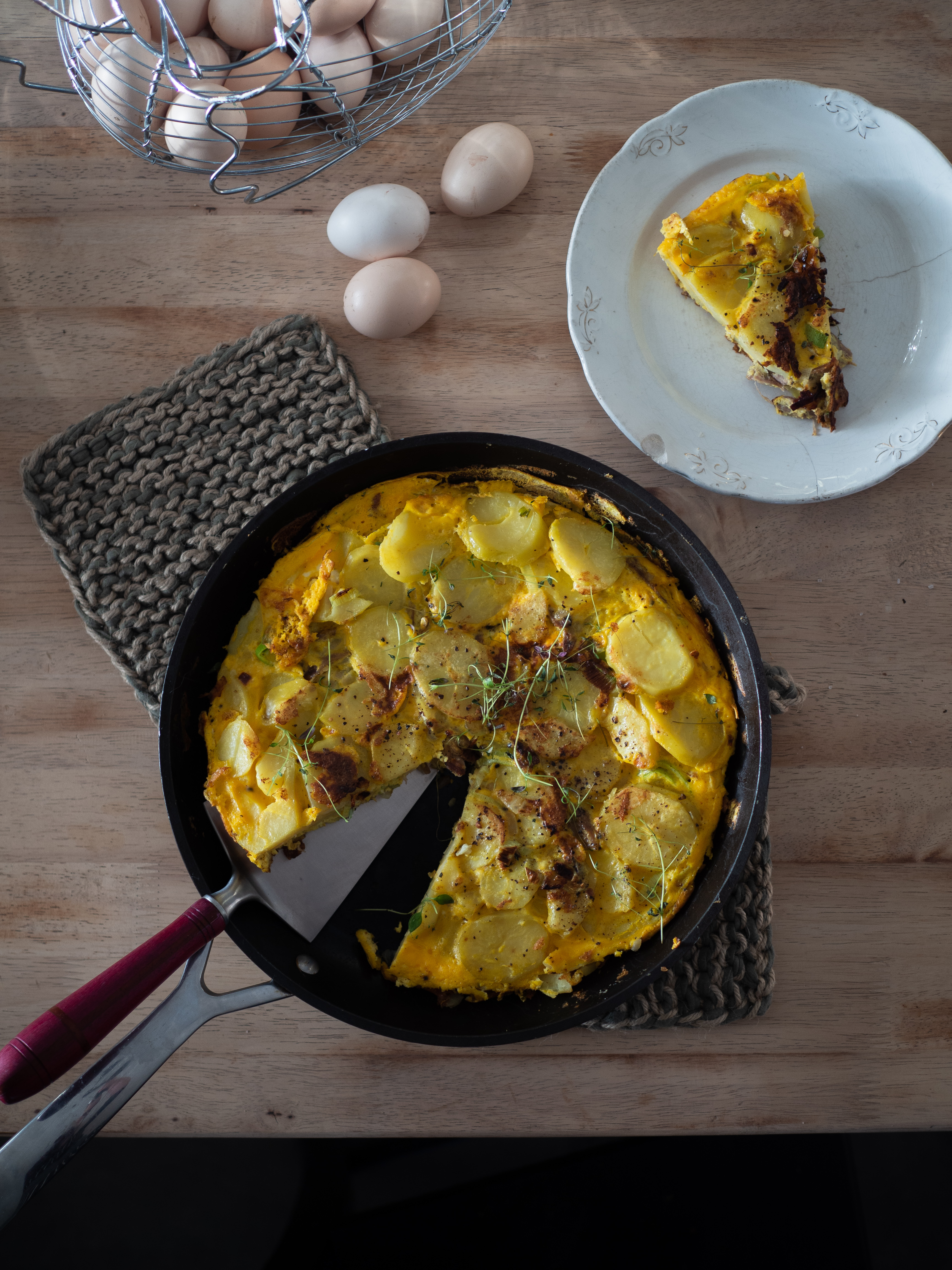
When we lived in Rome, our Italian landlady – who had worked at the Spanish embassy for 60 years and had been taught to make the Spanish tortilla from the ambassador’s wife – passed on her knowledge and recipe to me. In that recipe, every ingredient starts from scratch; cutting raw potatoes, salting & draining them before cooking them in oil and whisking the egg whites and yolks separately. The Norwegian technique is much simpler and less time-consuming, using leftover meat and potatoes that are already cooked and not worrying about separating the eggs or flipping the omelette back and forth. The techniques wield slightly different results, but both are delicious.
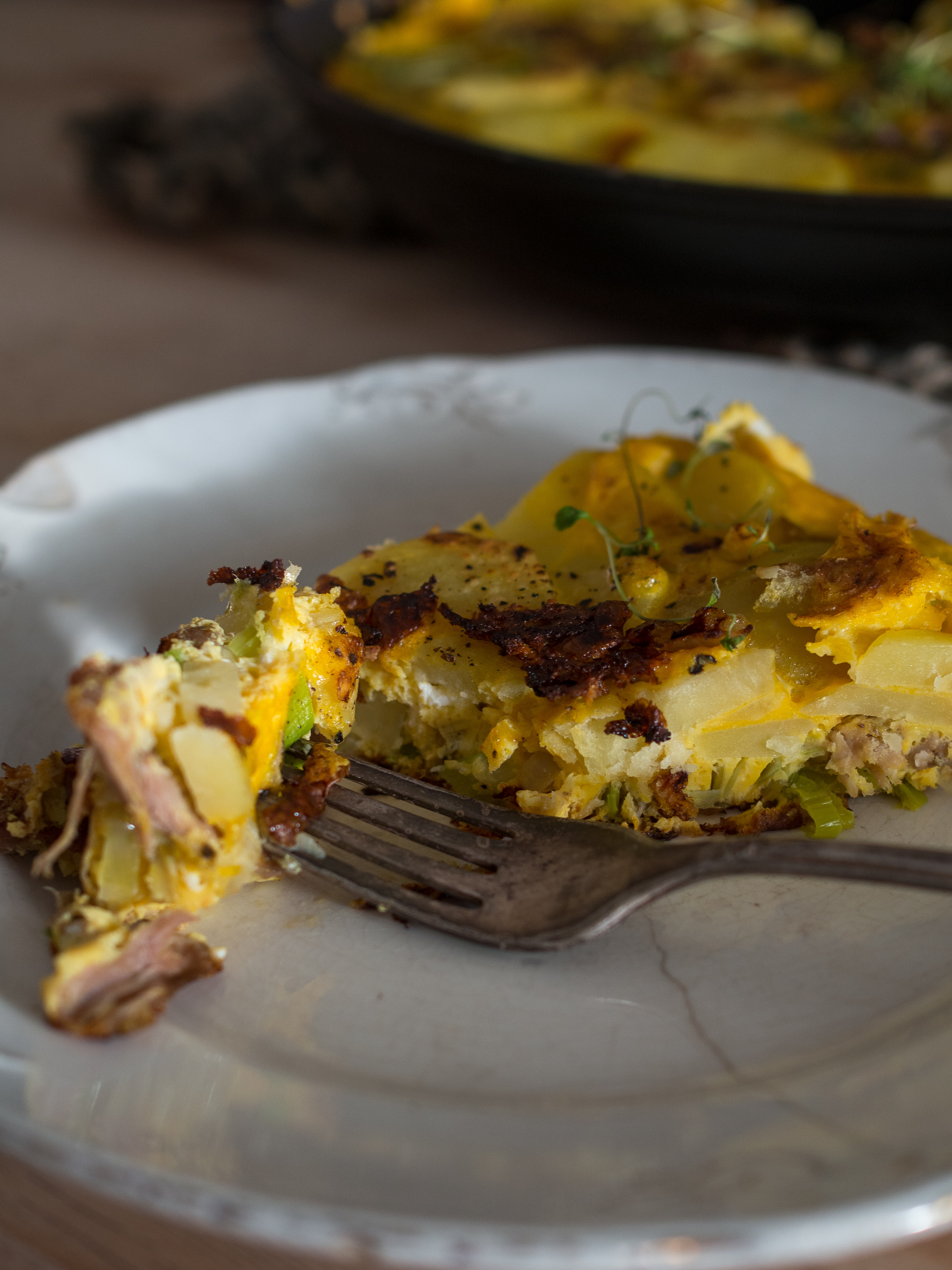
When cooking the omelette, there are a couple of ways you can do it. First, you can cook it over a high heat and turn it over a couple of times to cook the omelette through (the technique I learned in Rome). Secondly, you can cover with a lid, cook over medium/medium low heat, and let it sit on the stove for a good 25 minutes until the top is cooked through. Thirdly, you can begin cooking it over the stove and then transfer to the oven to cook it through and ensure the top has a nice coloration. While I typically turn mine over and over, for this recipe I let it cook on top of the stove with a lid and then flipped it over once to finish cooking the egg on top and give it a nice brown coloring before I flipped it back over to serve.
Also, feel free to use whatever leftovers you might have in the fridge and any herbs/vegetables in season. Vegetables, such as peas, are a common addition as well.
Bondeomelette
(Serves 6 to 8 )
- 10 large eggs, room temperature
- ¼ cup (60 ml) milk
- 1 teaspoon salt
- 1 tablespoon oil
- 1 tablespoon butter
- 1 onion, chopped
- 1 ½ cups (200 g) cooked, pulled meat
- ½ large leek, sliced into rings (about ¾ cup)
- 6 small potatoes (about 450 g), cooked
- Black pepper
Whisk together the eggs, milk and salt in a large bowl until fluffy.
Slice the cooked potatoes into rounds (about 1/4-inch or 1/2-cm in thickness).
In a large frying pan or skillet (use non-stick if flipping the omelette and use an oven-safe pan if placing in the oven), heat the oil and butter over medium-high heat. Add in the chopped onions and cook until soft and starting to brown, about 5 to 8 minutes. Add in the cooked meat and leeks and cook for about 2 minutes. Top with the sliced potatoes and pour over the egg mixture. Grind some black pepper over the top and lower the heat to medium/medium low and cover with a lid. Let cook for 20-25 minutes until the omelette is cooked all the way through. Check once or twice to ensure the bottom is not sticking or browning too much and adjust the heat if necessary.
If you wish, take a large plate over the top of the omelette and turn the omelette over onto the plate. Place the skillet back on the stove, turn the heat to medium-high, and slide the omelette back in, so the top is now on the bottom. Cook up to a minute longer, until it begins to brown. Turn the omelette over onto a serving plate. Serve immediately with a salad and/or bread.
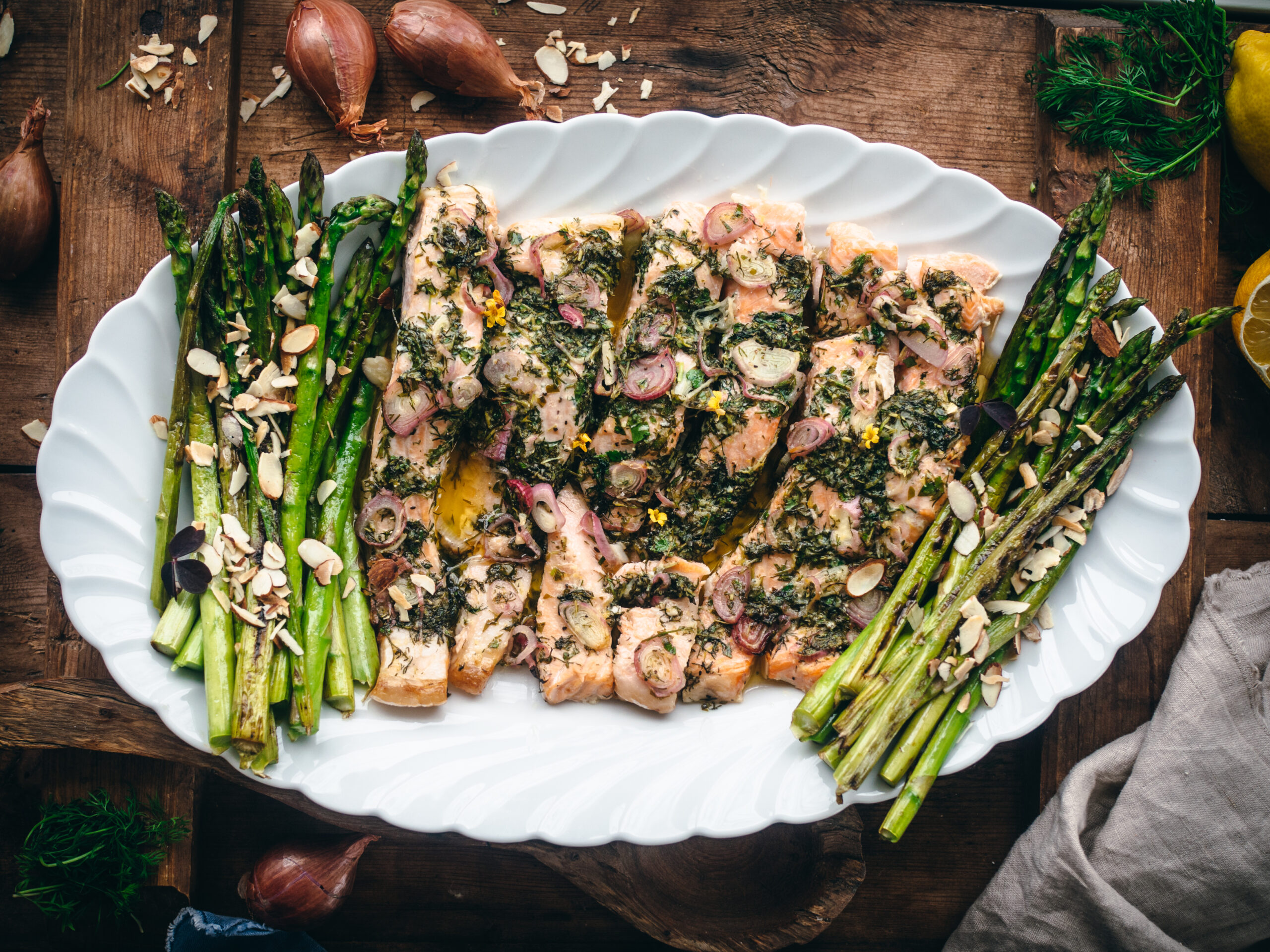

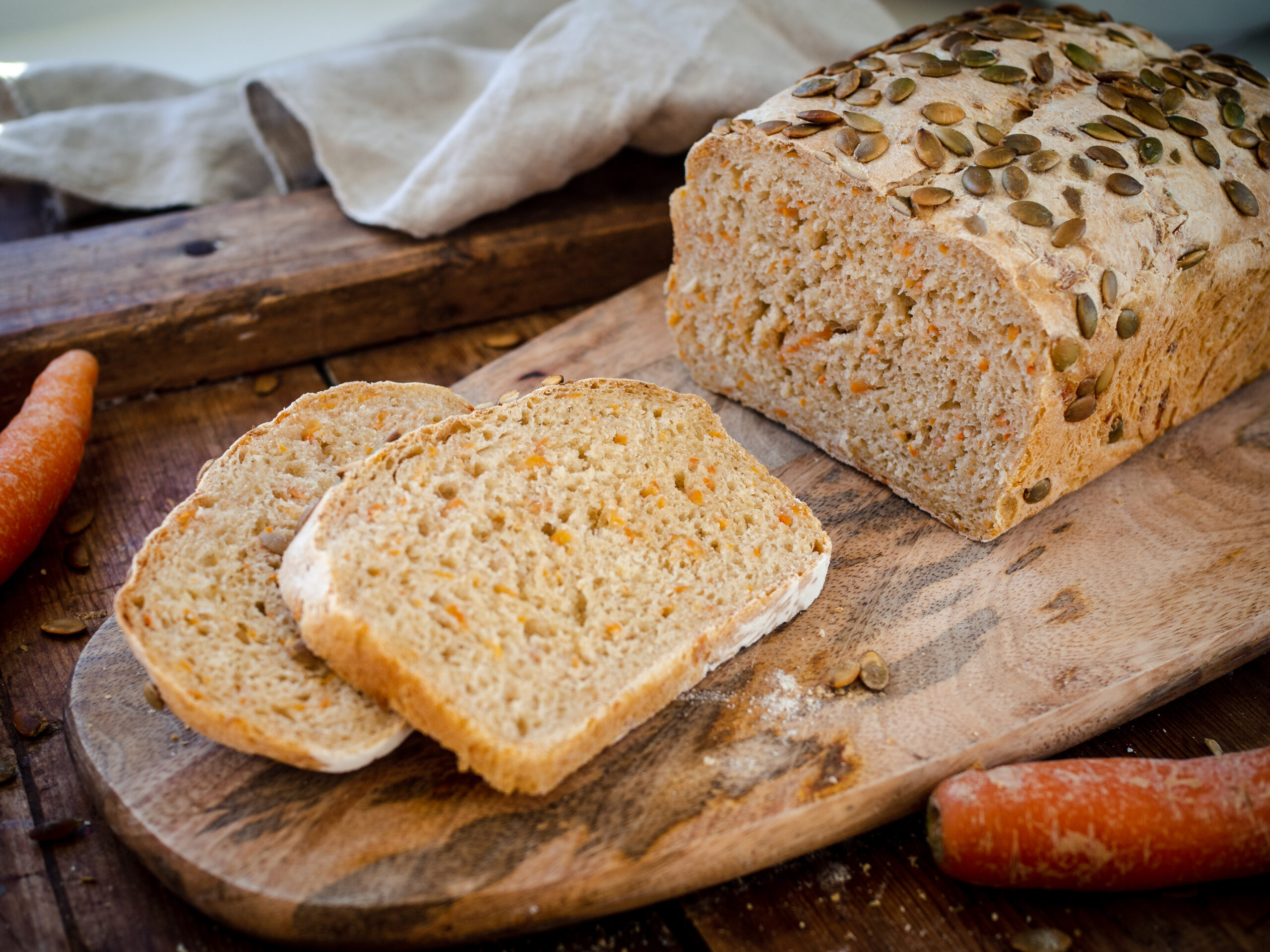
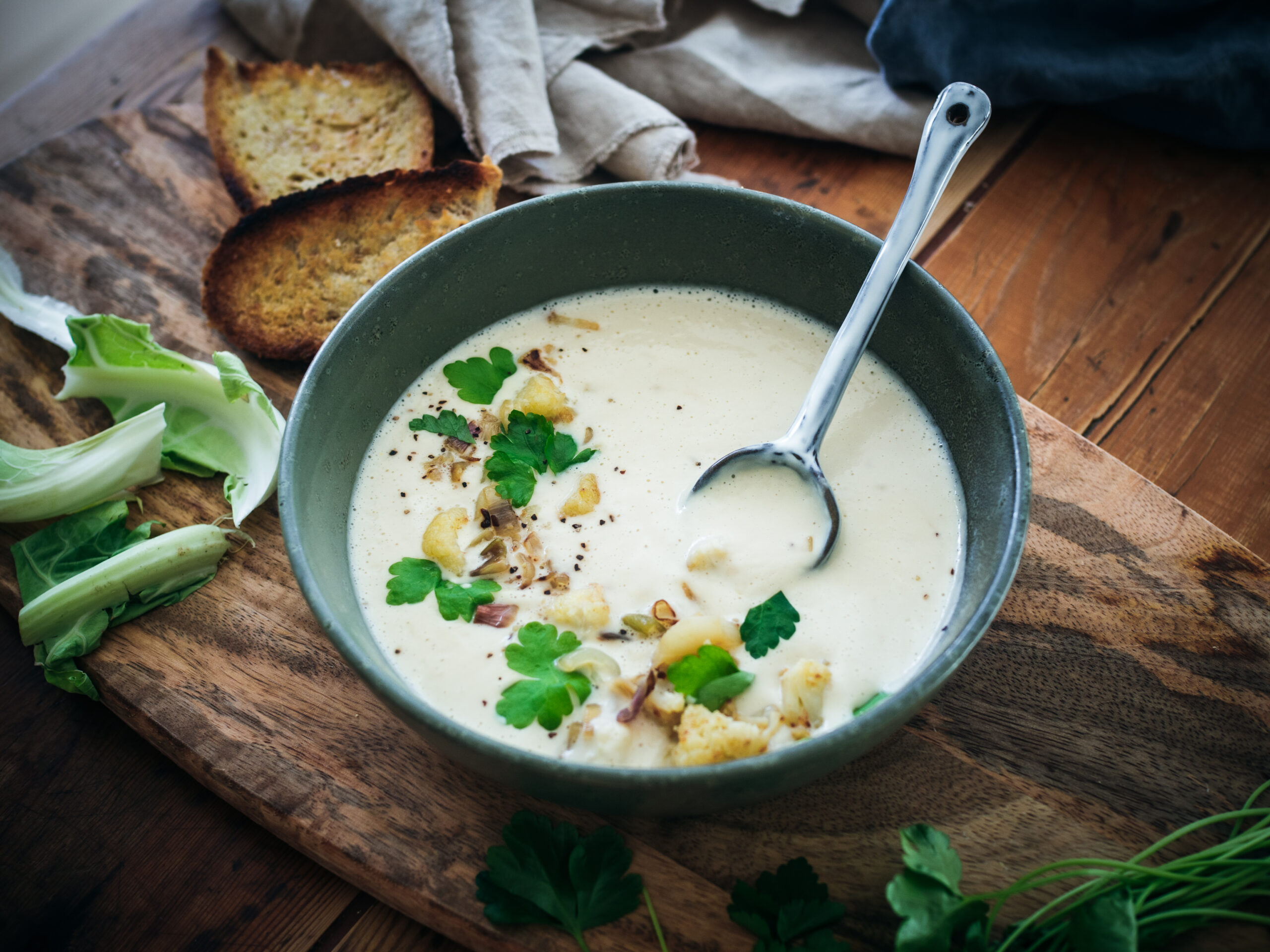
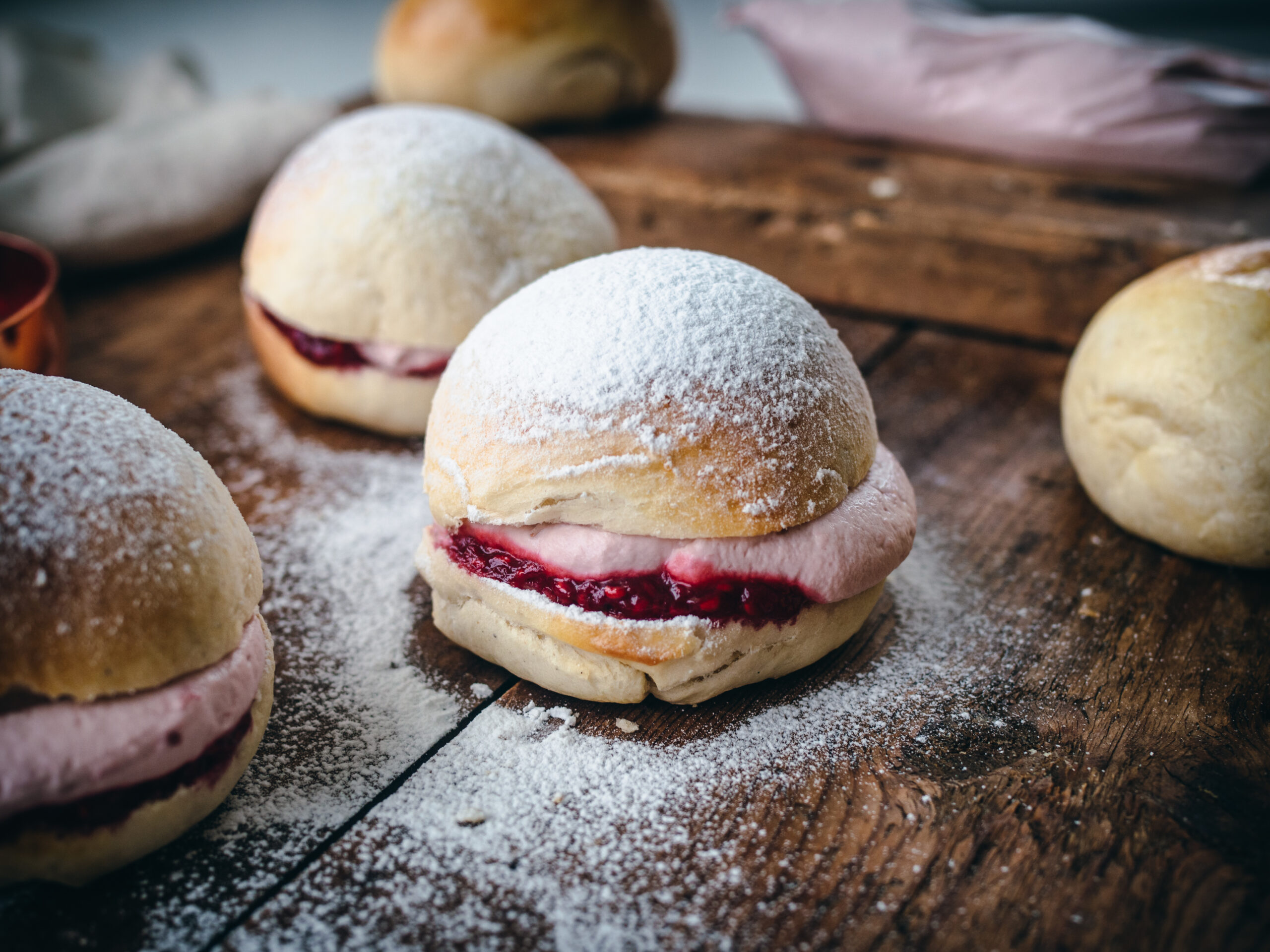
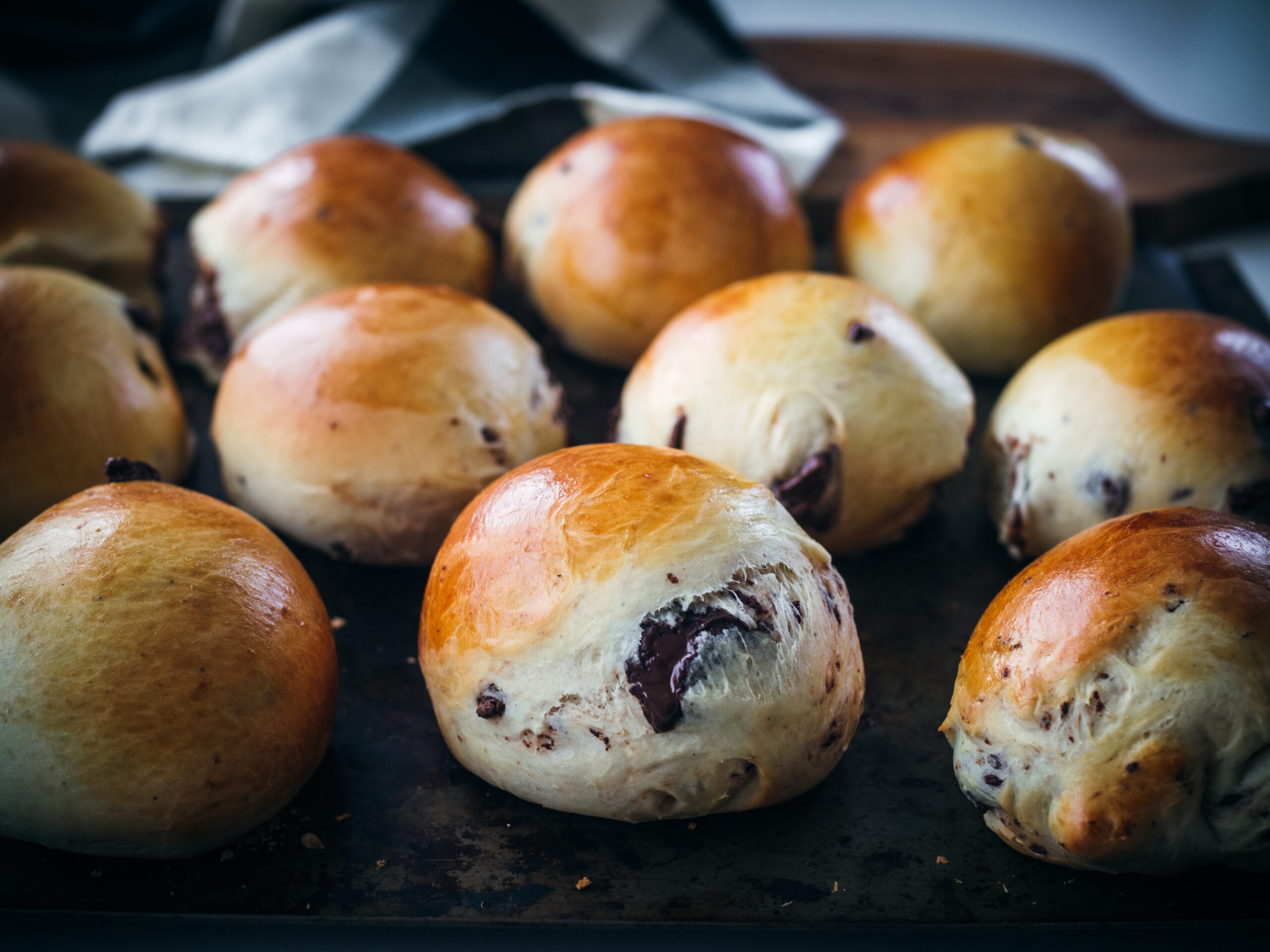
This is truly one of those old-school, hearty, authentic recipes that resonate with people all around the world. We bet each country has a version of this. The Norwegian one is definitely one we must try, as we love eggs, especially when they are from free range chickens and we love the rustic style of this dish.
You managed to photograph a really difficult subject and once again, created a blog post that’s beautiful and makes one drooling:)
Congrats dear Nevada!
Thanks you guys! I bet there is an amazing Greek version!
This looks great. I’m gonna try it! Thanks for recipe.
I hope you enjoy it!